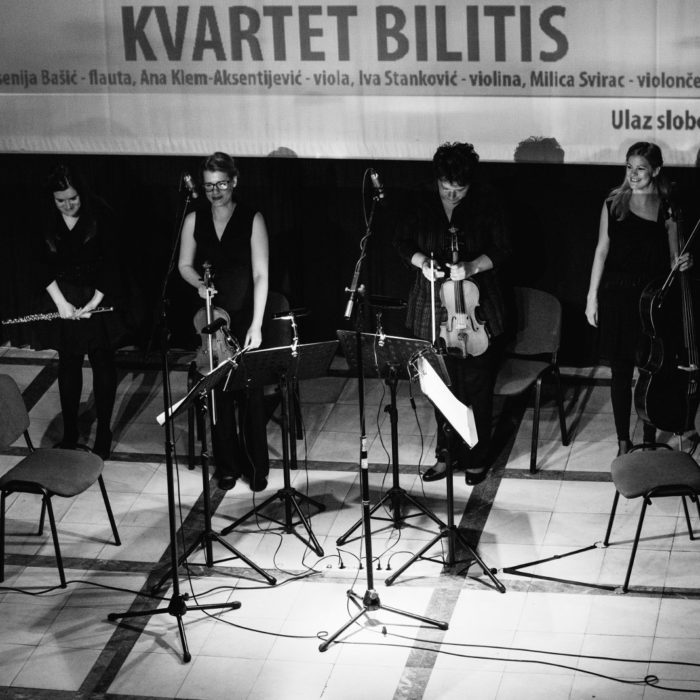Nova Festival
Festival of New Art
13–15 October 2016
Pančevo/ Kovin/ Beograd
PANČEVO
13th October at 20:00, Galerija Milorada Bate Mihailovića
Žarka Zrenjanina 1
Opening ceremony
Audio–visual performance: Kvartet Bilitis “Different Trains” (Serbia)
Ksenija Bašić – flute
Iva Stanković – violin
Ana Klem–Aksentijević – viola
Milica Svirac – cello
Bilitis
Upon mention of classical music, most people initially think of Beethoven, Mozart or Vivaldi. On the one hand, such representatives of cultural mainstream evoke deep respect as well as disinterest among the younger audience, deeply submerged in pop and alternative cultures. On the other hand, a good deal of contemporary popular music, especially within its “independent” branch, sprang out of a “different” kind of classical music established by innovative twentieth-century artists. One of the pioneers of minimalism, American composer Steve Reich, is certainly among such artists. His opus is also within the domain of interest of the Novi Sad quartet Bilitis.
The line-up consists of Ksenija Bašić (flute), Iva Stanković (violin), Ana Klem-Aksentijević (viola) and Pančevo’s own Milica Svirac (cello). In its unique fashion, the band interprets “Different Trains”, one of the most esteemed pieces from Reich’s opus. Made in 1988, the song had its debut performance by the famed Kronos Quartet. Next year it won the Grammy Award for the best contemporary composition. Although “Different Trains” was originally written for a string quartet, its “domestic version” switches the first violin for a flute, whose tone blends seamlessly into the sound environment. The live performance will be accompanied by a video presentation of the graphic designer Ivana Radmanovac, specially commissioned for the Bilitis quartet.
The composition features a particular character, technique of composition and performance. It was inspired by Reich’s train journeys from New York to Los Angeles while visiting his divorced parents on two opposite sides of the continent. Many years later, growing aware that in Europe at the time (from 1939 onwards) trains transported Jews into concentration camps, he drew a parallel between his life and lives of other Jewish boys who were about his age. Through different parts of the composition, Reich summons forth the sound of “different trains”. In a highly original fashion, he starts with sound fragments of human speech (his governess, Holocaust survivors) as a melodic foundation for developing this extraordinary composition.

